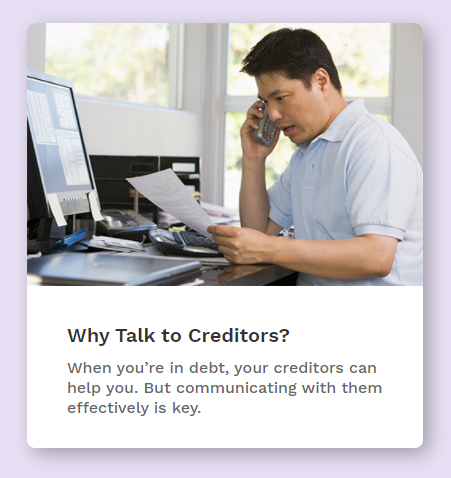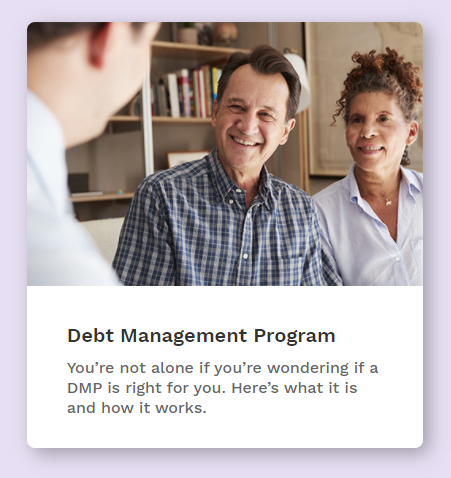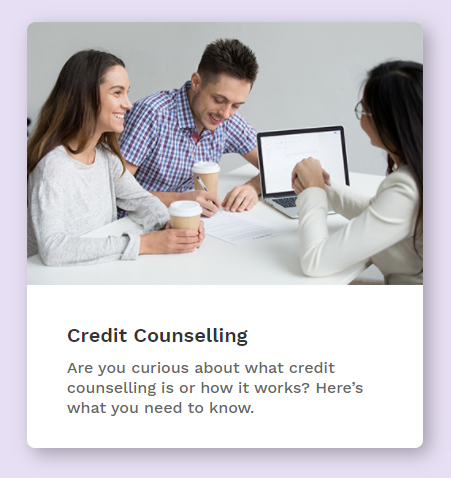How to Reduce Debt – Power Tips, Ways, & Methods
If you are wondering how to reduce your debt as fast as possible, we’ll show you the best ways to reduce debt in Canada, how to pay off credit card debt quickly, and the strategies and tips that really work. We’ve arranged these tips and insights into two sections that line up with what you need to do first. The first thing you should do is free up some money to work with, and the second thing you need to do is use that money strategically to pay down and eliminate your debts. If you’ve heard of an amazing way to reduce your debt and you’re looking for more information on that, we show you how to access debt relief programs too. However, these aren’t for everyone. They have special advantages but also disadvantages too. Because these debt relief programs aren’t for everyone, we’ve put together some of the best tips here that will work for almost everyone. See what you can find that will work for you. If your situation looks really bleak, you can get some great, free one-on-one help too. 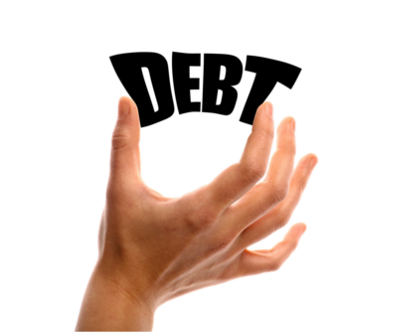
How to Free Up Some Money to Reduce Your Debt
1. Create a Spending Plan
Before you can do anything to reduce your debt, you need to know how much money you have to work with. Find out by quickly putting together a spending plan: add up all your expenses for the month and then subtract them from your monthly income. What ever is left over is the extra money you have to pay down your debt. If you don’t have anything left or if you’re spending more than you earn, you’ll need to find places to reduce your spending, sell some of your stuff to pay down your debt, increase your income, or sit down with a budgeting expert (we cover most of these below).
A spending plan is actually another name for a budget, but don’t let the “b” word put you off. We’ve create a super helpful budget calculator that helps you quickly create a budget. It tells you how much you should probably spend in each area of your spending based on your financial situation, it does all the math for you, it tells you where your budget needs to be fine-tuned if it doesn’t balance, and it offers tons of suggestions to reduce your expenses and improve your budget if you want to use them. Check it out. It’s completely free and is actually kind of fun.
2. Stop Using Credit – While You Work on Paying Off Your Debt
Studies show that people spend 56% more when they buy food with credit and 100% more at vending machines and on event tickets. Overall, studies seem to show that we all spend at least 15% more when we buy things on credit. If you’re an average Canadian household, this means you could save well over $3,000 per year by using cash or debit instead (and that’s after including the loss of your credit card reward points or cashback which would only amount to $400 at best). $3,000 can go a long way towards helping to reduce your debt. So do yourself a favor, stop using credit until after you’ve got your debt paid off. This means stop using your overdraft too. Open a new chequing account if you need to and treat your overdraft like a loan until it’s paid off.
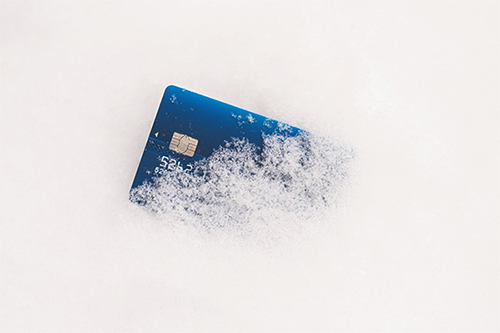 |
|
| Put your credit cards on ice while you reduce your debt. While we mean that figuratively, you can literally freeze them in a bucket full of ice if that helps you limit your use of them. | |
If you do need to use your credit card or overdraft for something, make sure to treat it like a bill. Don’t spend any money you don’t already have in your bank account, and make sure to immediately allocate that money in your account towards the bill you put on credit so that you don’t spend it.
3. Change Your Mindset Towards Money and Credit
If you haven’t already, change your mindset towards money. Our society tends to encourage people to get what they want whenever they want it. Unfortunately, this approach is financially unhealthy and often doesn’t end well for a whole lot of people. Instead, learn to live on less. Trim your spending until you actually have money in the bank to spend. Save up for everything you buy. Save credit for emergencies and smart purchases that make sense. Don’t feel you’re entitled to things. Instead, earn the right to things buy saving up for them.
A lot of people feel there are entitled to nice things and a nice life, or they feel they are entitled to a reward for something they have done. If you have a lot of debt and your entitlements involved spending money, then you need to change the way you think – at least until your debt is paid off. When you’re trying to reduce your debt, feelings of entitlement that cost money to fulfill are counter-productive. They will hold you back, slow you down, and probably increase your debt. You also shouldn’t need to spend money (or much money) to be happy either. Happiness is a choice, and it doesn’t need to come from spending money. Try spending time with friends and family, find a low cost hobby, borrow books from the library, learn a skill or improve your education by finding free, online resources (videos and blogs), save on cable by watching shows on Netflix and TV websites, etc. There are plenty of other free or low cost things you can do to enjoy yourself.
Another place to change your thinking is in regard to credit that’s available to you. The available limit on your credit card or your overdraft is not your money. That’s someone else’s money that they are hoping you will borrow at a very expensive interest rate. When you start to view your available credit as someone else’s money – a very expensive loan that will massively slow you down – it’s easier to say “no thanks” and rely on your own plan. As part of your debt reduction plan you need to think, “if I don’t have the money for something, then I won’t buy it. I must have the money in the bank first.” One more thing you can use to reduce your use of credit is reminding yourself that if you use more than 30% of your credit limit on any of your credit cards, overdraft, or line of credit, this will start to negatively impact your credit score. So do your credit score a favor and rely on your own money rather than credit.
4. Where to Actually Find Money to Pay Down Your Debt
Reducing debt is easiest if you can throw extra money at it on a regular basis. In fact, once you get really serious about reducing your debt, you’ll want to use all the money you can find to pay down your debt as quickly as possible. Here are a ton of great ways to get more money to pay down your debt faster. Not all these ideas will work for everyone, but try and see how many of them you can make work for you.
- Make sure to do step one above: create a budget, review your spending, and find monthly expenses to either cut or reduce. Look for ways to downsize and economize. This isn’t a life-sentence. You just need to tighten you belt until your debt is paid off, then you can re-assess things and make a new plan.
- 10 places to find money to save every month. This list will get you thinking.
- 7 big tips to save thousands on expenses plus a dozen more tips to save you hundreds.
- How to save a lot of money on groceries plus lots of other money saving suggestions.
- Free up cash by sell some of your stuff and use the money to pay down your debt. Sell more valuable things on Craigslist, Facebook, or eBay. You could hold a garage sale to sell cheaper stuff.
- If you’re currently putting money into savings every month, consider temporarily suspending contributions to RRSPs, your TFSA, or RESPs while you pay down your debt. You’re likely paying a lot more in interest on your debt than you’re receiving from your savings. Diverting any savings to paying off your debt will help you do it a lot faster so you can resume your saving as soon as possible. Please note, you may have some valid reasons to continue your savings program while you work at paying off your debt. Receiving matching funds from your employer on RRSP contributions would be one example. We’re just offering this point as something for you to consider.
Ways to Reduce Your Debt as Quickly as Possible
Beware of the Big Debt Rip-Off: People Advertising They Can Massively Reduce Your DebtConsumer Proposals have become the latest method for a growing number of for-profit companies and their sales people to take advantage of vulnerable, unsuspecting consumers. Don’t let this happen to you! Many debt relief companies are now claiming to offer Consumer Proposals as an easy way to get out of debt. There’s a problem. Only a licensed bankruptcy trustee is allowed to file paperwork for a Consumer Proposal. The debt relief companies charge thousands in fees only to refer you to a bankruptcy trustee who then charges his or her own fees. How to Keep from Getting Ripped Off
|
|||
| Related Topic: The Similarities & Differences Between a Consumer Proposal & Bankruptcy |
There are a lot of ways to reduce your debt, but we’re going to focus in on what are probably the 7 best strategies to reduce and ultimately get out of debt.
1. Pay Your Mortgage Bi-Weekly Instead of Monthly and Round Up Your Debt Payments
Once you’ve put together a spending plan and know how much money you have to work with, you can consider accelerating your mortgage payments to paying bi-weekly instead of monthly. This is one of the simplest tricks that really works for everyone. On the surface, it seems like you’re paying the same amount, but really, you’re paying your debt off extra fast by slipping in the equivalent of one extra payment per year. This trick will pay off a mortgage several years sooner.
You can also pay off any type of debt faster by rounding up each one of your payments. Learn more about both of these strategies
2. Popular Methods to Reduce Credit Card Debt
There are two great ways to reduce your credit card debt: focus on paying off your highest interest rate card first, or pay off your smallest balance first and work your way up to paying off your largest balance last (this is called the snowball method). The first method is the best mathematical solution (with it you pay the smallest amount of interest). However, most people don’t find mathematics to be very inspiring. So the second method often works out better for a lot of people because it’s motivating. Here’s how these methods work:
Method 1: Pay Off Your Most Expensive Credit Cards First
With this pay-down method, you list all your credit cards along with the amount of interest you’re being charged on each one. You start by only making the minimum payments on all your cards except for the one with the highest interest rate. Free up all the money you can (see the many suggestions above) and focus all your extra money on paying down this one, most expensive debt. Once this card is paid off, continue making your minimum payments on all other cards and now focus all your attention on paying down your card with the next highest interest rate. Continue this process of paying off all your debts in the order of their interest rates, from the highest, first, down to the lowest, last. This approach will save you the most money and help you pay down all of your debts faster.
Method 2: The Snowball Method – Pay Off Your Smallest Debt First & Work Up to Paying Off Your Largest Debt Last
With this method, you list all your credit card balances, find the smallest balance, and then focus on paying it off first. While you free up as much money as you can and focus every dollar you can find on eliminating your smallest credit card balance, continue to make only your minimum payments on your other credit cards. It shouldn’t take long to pay off your smallest balance, but after you do, you’ll feel great knowing that you’ve completely eliminated one debt and now have one less thing to worry about.
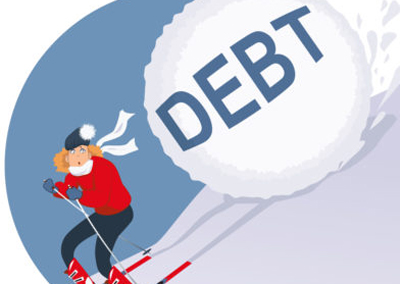 Take all the money you were using to pay your smallest credit card debt each month and now focus all of that money on paying off your second smallest credit card balance. Once that balance is paid off, again take all the money you were using to pay it down each month and now focus that money on your next smallest credit card debt. You’ll continue this process until you’re finally paying off your largest credit card balance last. As you pay down each of your smaller credit card balances, you’ll free up the money you were using to make the minimum payment on each of those debts. As you pay off more and more smaller debts, the amount of money you’ll have to focus on the next debt will grow and grow – kind of like a snowball rolling downhill. That’s why this is called the snowball method. It can have a powerful psychological effect on you because it can feel like you’re making progress sooner. This can be very encouraging and provide a lot of motivation to keep paying off your other debts.
Take all the money you were using to pay your smallest credit card debt each month and now focus all of that money on paying off your second smallest credit card balance. Once that balance is paid off, again take all the money you were using to pay it down each month and now focus that money on your next smallest credit card debt. You’ll continue this process until you’re finally paying off your largest credit card balance last. As you pay down each of your smaller credit card balances, you’ll free up the money you were using to make the minimum payment on each of those debts. As you pay off more and more smaller debts, the amount of money you’ll have to focus on the next debt will grow and grow – kind of like a snowball rolling downhill. That’s why this is called the snowball method. It can have a powerful psychological effect on you because it can feel like you’re making progress sooner. This can be very encouraging and provide a lot of motivation to keep paying off your other debts.
Choose the credit card reduction method that you think will work best for you. There are people who claim each method is better than the other, but each one of us is different. Whichever method helps you succeed is the best one for you.
3. Debt Consolidation Loans – They’re a Double Edged Sword
Debt consolidation loans aren’t as good as most people think. If you can get one at a reasonable interest rate, it can be a good way to reduce your debt, but be very careful to follow a budget and spend less than you earn or you’ll soon re-accumulate the debt you’re paying off and end up right back where you started. Believe it or not, with a consolidation loan, ending up back where you initially started is actually normal. A number of years ago, a bank study found that more than 70% of people who received a debt consolidation loan where not better off financially after repaying their loan because they had re-accumulated the debt.
You can learn from the mistakes of others. Don’t relax when you get a debt consolidation loan thinking you’ve fixed a problem and now everything is good. You’ve only really helped yourself and fixed something when the loan is fully paid off and you haven’t re-accumulated the debt.
Another way you can increase your chances of succeeding with a consolidation loan is to reduce your credit limits after you receive a loan. If you’re consolidating $10,000 worth of credit card debt, reduce those card limits to $2,000. That way if you end up being “normal” and re-accumulate debt, you will have capped the amount of debt you can rack up and limit your future trouble. Paying down a future $2,000 consolidation loan is much better than having to pay down another $10,000 loan.
So to recap, getting a debt consolidation loan is only helpful if you follow a spending plan and consistently spend less than you earn. You will also be wise to reduce the credit limits on any debt that you consolidate.
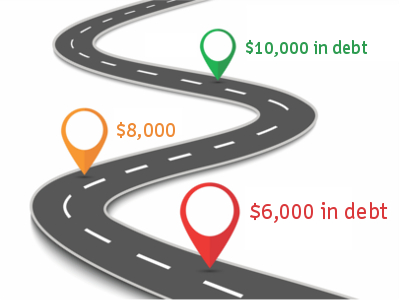 4. Track Your Progress Each Month
4. Track Your Progress Each Month
To make sure you are actually reducing your debt, it’s important to add up your debt balances each month and write them down. By consistently tracking your progress each month you’ll be encouraged, and you’ll be sure to actually reduce your debt. If you get too relaxed because your plan is going well and you start spending more money than you should, you’ll instantly notice at the end of the month when you add up your debt balances and see that you aren’t progressing as you would like to.
5. Create $500 to $1,000 in Savings
It’s much harder to get out of debt when you’re relying on credit. To change your mindset and permanently get your finances onto the right track, you need to learn to operate out of your own money rather than relying on someone else’s money. When you rely on credit, your ceiling is your credit limit. Once you hit it, you can’t spend any more. So you stop. You need to change this. Your spending limit needs to be the money you actually have in your chequing account. Once it’s gone, then you shouldn’t spend any more. Once you refine your spending plan and learn to follow it, you should be able to always keep a buffer of $500 to $1,000 in your chequing account. You will occasionally need this money when an unexpected expense pops up (they always happen from time to time no matter how good your planning is). Think of this money as your new credit limit. If you hit the max on your credit card’s line of credit, you’d have to sacrifice and economize until you paid it down enough. The same is true with your $500 to $1,000 chequing account buffer. Once you use it up, you’ll need to tighten your belt and spend less until it is built back up.
To find the $500 to $1,000 saving buffer you’ll need, have a look above at the “How to Free Up Some Money” section. There are lots of ideas there. It may take you a number of attempts to learn how to live off of your own money. Breaking old habits is hard. But learning to rely on yourself and ending your dependence on credit is worth it.
If you have been living out of your overdraft, that is super expensive and will hinder your efforts to reduce your debt. Open a new chequing account, save up $500 to $1,000, transfer your pre-authorized payments to the new chequing account, reduce the old chequing account to the cheapest monthly package, and treat your overdraft as a loan and pay it off. This may seem like a bit of work, but you need to break the cycle you’re in and develop new money habits and a new mindset.
Here’s one last thought to leave this section on. In the future, if you’d like to increase your “credit limit” from the $500 to $1,000 we discussed here, save up the amount you’d like to increase your limit by. A $3,000 credit limit, for instance, is nice, but it’s infinitely better if that’s all your money that you’ve saved up. You will think of it way differently, and your finances will benefit tremendously as a result.
6. Look for Ways to Increase your Income in Order to Reduce Your Debt
This method of reducing debt is probably the most difficult. However, it helps you to eliminate debt way faster if you can do it. Getting another source of income can be challenging and requires some thought and careful consideration, but here are some ideas to get you thinking:
- Get a second job for weekends, evenings, or whenever you can make some time.
- Become a dog walker or pet sitter.
- Consider tutoring on evenings or weekends. You can even do online tutoring from the comfort of your own home.
- If you have a strong skill set, look for ways to cash in on your skills. For example, if you’re a strong writer you can look into freelancing articles and blog posts, if you’re crafty you can sell your creations on Etsy, and if you’re handy around the house you can consider advertising your services on Craigslist. Don’t let these examples limit you, though. Any skill or talent you have could potentially be turned into a way to earn extra income. Here are a bunch of low cost hobbies that you can actually make money at, and here are a couple of the larger freelancing websites: Upwork, an American freelancing platform headquartered in Santa Clara and San Francisco, California. And Freelancer, an Australian freelance marketplace website.
- Rent out a spare room in your home on Airbnb.
- Rent out the storage space in your garage or an extra parking spot you have.
- Apply to billet an international student or host home-stay students through your local school district.
- Sign up for focus groups or get paid to take surveys.
- Deliver newspapers.
- Do customer service telephone work from home. Currently Pizza Hut, KFC and Panago will pay you to take delivery orders per call, from home.
- Earn money for product testing or trying things out.
There are tons of other things you can do to increase your income as well. The key is to find something that will work for you. Some of these ideas pay better than others. However, if you can find something that you really like to do or seem to be much better at than most other people, then you may have the potential to do well in that area and enjoy yourself at the same time.
7. Sit Down with a Credit Counsellor
If you simply need help with reducing your debt – may be your financial situation is really getting you down, things have gotten out of hand, or you’re really struggling to meet your financial obligations – then your best bet is to sit down with a non-profit Credit Counsellor. They are experts at helping people assess their whole financial situation, put together a budget (spending plan), explore their options, and put together a plan to set their finances back on track and get out of debt. Their help is usually free and completely confidential. If you live in Canada in Ontario, BC, Alberta, Manitoba, Saskatchewan, or the territories, we can help you (for help in Quebec and the Maritimes, click here). Our help is completely free. We would be happy to help you either in person at one of our offices or over the phone.
In Conclusion
By using as many of the strategies and tips offered here as you can, you can make tremendous progress in reducing your debt and eliminating it faster than you might ever have thought possible. If you really need some help to put together a plan and get started, give us a call. One of our professionally trained Credit Counsellors would be happy to help you. Regardless of how you decide to reduce your debt or which of the ways you choose, if you follow some kind of a spending plan, consistently pay extra on your debts, and track your progress, you’ll be firmly on the path to eliminating your debt and you’ll be encouraged as your debt balances keep falling.
Last Updated on January 26, 2025




